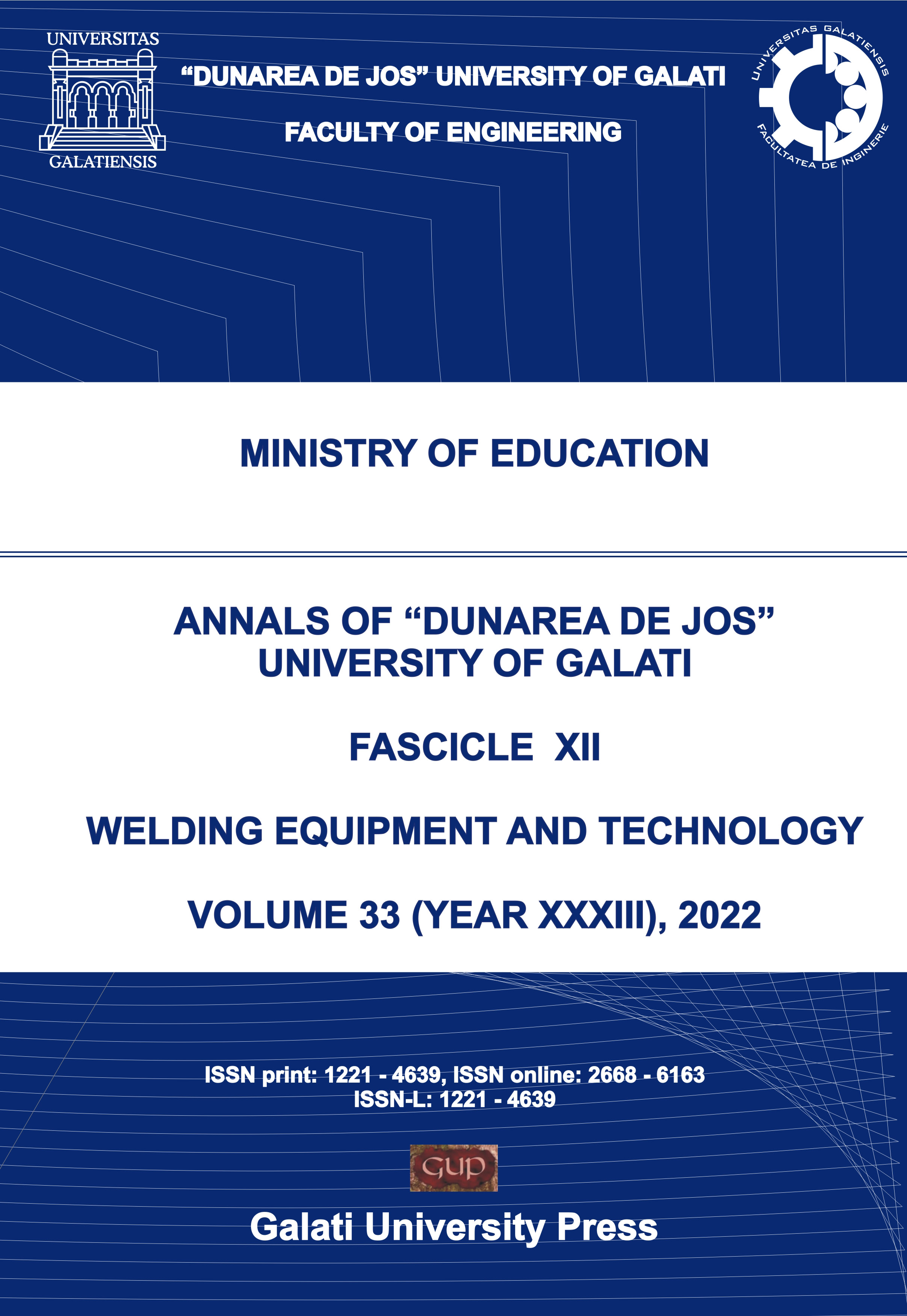Machine Learning for Parametrical Analysis of Friction Stir Welded Aluminum Metal Matrix Composites
Abstract
The research focuses on the behaviour and process parametric influence on friction stir welded Al metal matrix composites reinforced with varied percentages of SiC, B4C, and Mg. The experimentation involves fabrication of Al metal matrix composites followed by friction stir welding and, subsequently, evaluation of the joint properties in terms of mechanical strength, microstructural integrity, and quality. In comparison to other joints with varied base material compositions, the weld exhibits refined grains and uniform distribution of hybrid particles in the joint region, resulting in increased strength. Higher SiC composition adds to greater strength, better wear characteristics, and harness, whereas B4C percentage is linked to hardness. The maximum ultimate tensile stress for a particular sample was determined to be around 160MPa, while the maximum percentage elongation was found to be around 165 for 10% SiC and 3% B4C. As the amount of SiC declines and that of B4C rises, the percentage elongation decreases. In samples with a B4C weight percentage of 10%, the greatest hardness measured was around 103Hv. For a load of 30N, the wear rate was as high as 12gm/s with a SiC weight percentage of 10. For lower load values and a higher percentage of B4C, the wear rate often decreased. Chemical properties are barely changed. Therefore, the materials keep their original qualities after welding. During the non-destructive testing process, no large cracks, pores, or clusters of pores are found, indicating that the weld is of good quality. To achieve a satisfactory weld, optimal ranges based on analysis using machine learning of rotary tool speed, tool linear velocity, transverse speed are maintained. Linear Regression algorithm, Random Forest algorithm and Lasso Regression algorithms are being used and the results are also compared. This work covers a wide range of topics, and the results are found to have improved significantly in most cases and is in good agreement with data previously presented in the literatures.
Downloads
Papers accepted for publication become the copyrighted property of the Annals of "Dunarea de Jos" University of Galati, Fascicle XII, Welding Equipment and Technology. No part of the publication may be reproduced or transmitted in any form, or by any means, electronic or mechanical, including photocopy, recording, or any information storage and retrieval system, except in limited quantities for the non-commercial purposes of scientific or educational advancement, without permission in writing from the Editorial Board.


